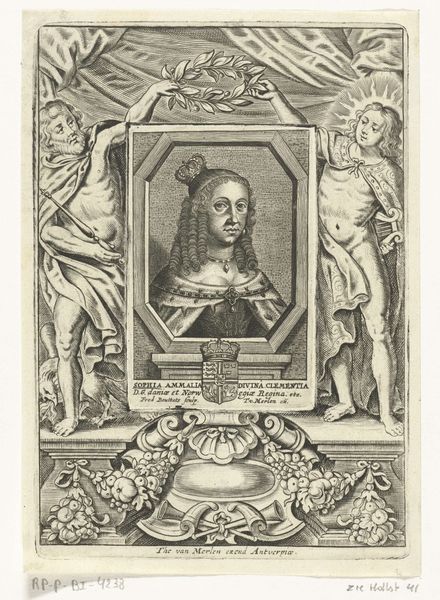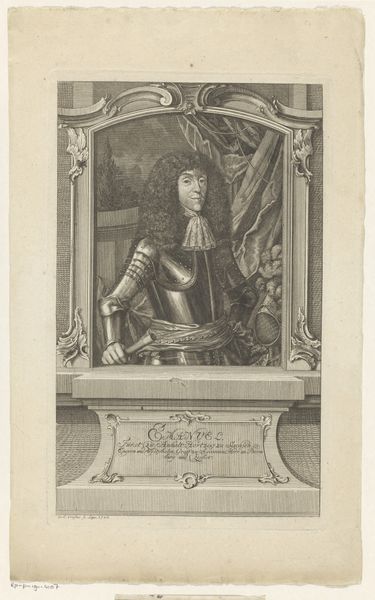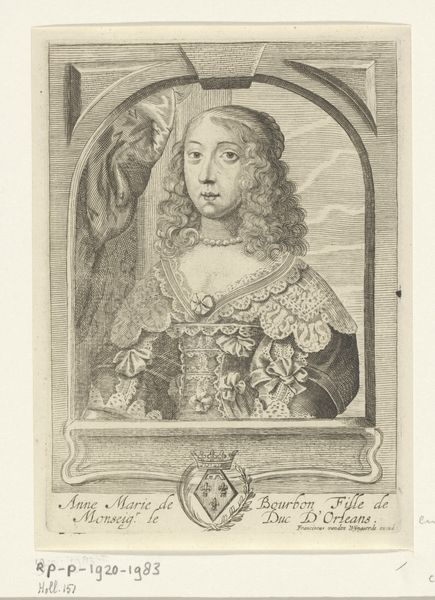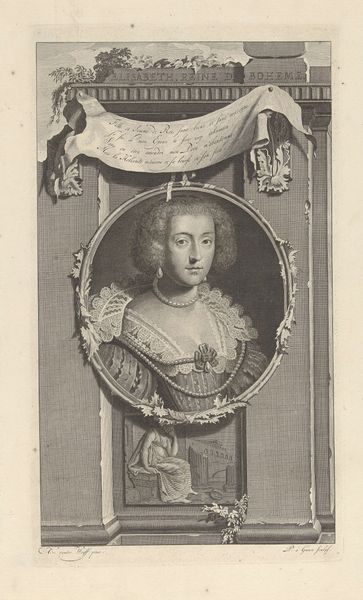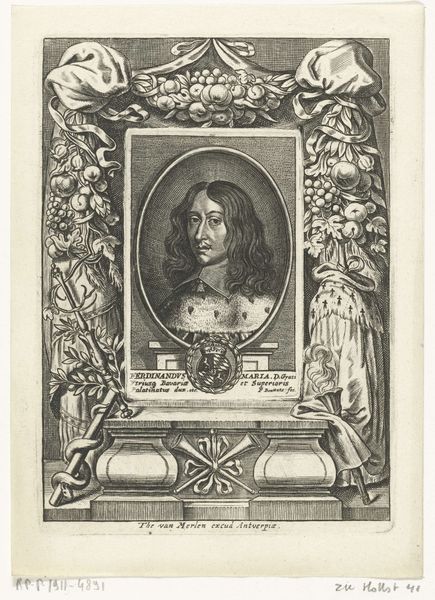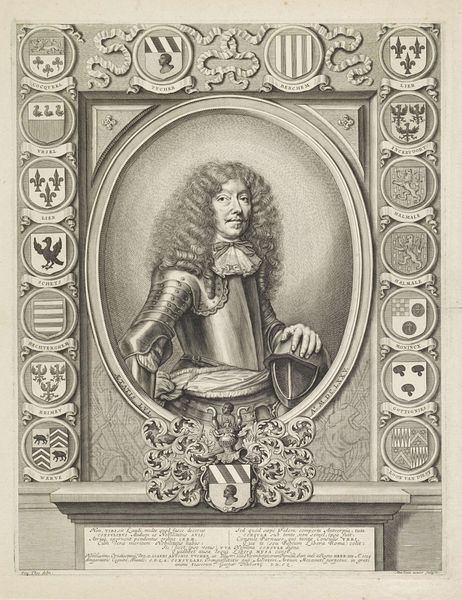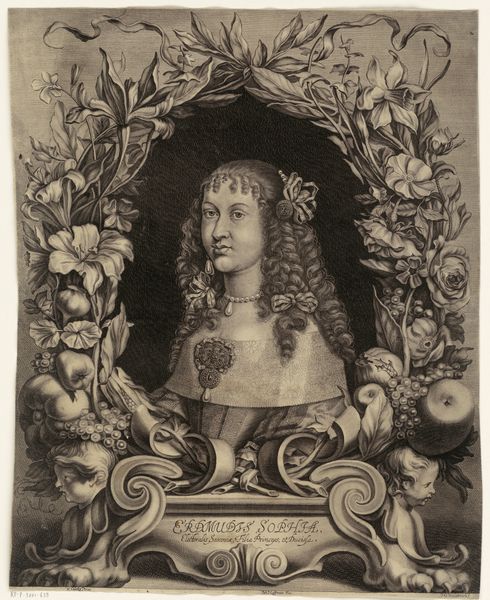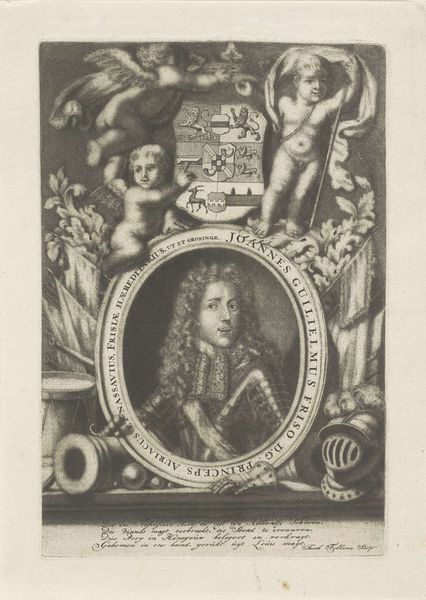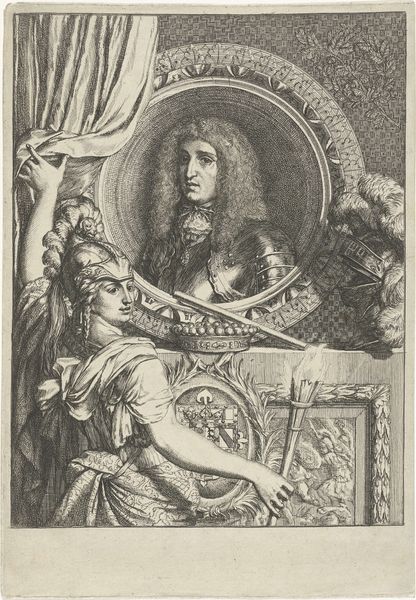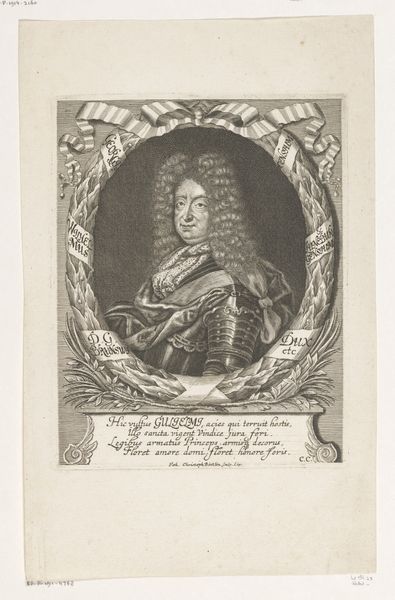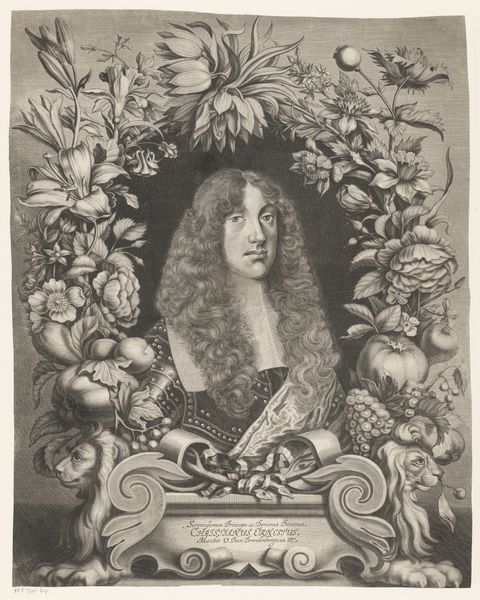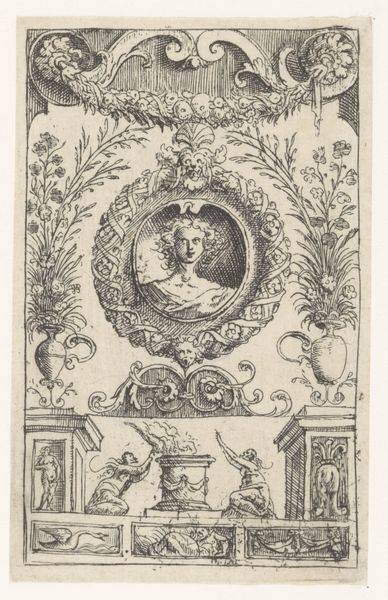
print, engraving
#
portrait
#
baroque
# print
#
pen illustration
#
old engraving style
#
caricature
#
figuration
#
form
#
line
#
engraving
Dimensions: height 166 mm, width 115 mm, height 89 mm, width 57 mm
Copyright: Rijks Museum: Open Domain
This is Frederik Bouttats’s “Portrait of Philip I, Duke of Orléans,” an engraving made sometime in the 17th century. Engraving is an intaglio printmaking technique, where the artist uses a tool called a burin to carve a design into a metal plate, in this case, copper. The incised lines hold ink, and when pressed onto paper, transfer the image. Look closely, and you'll see the density of fine lines that create the tones and textures, from the sheen of Philip’s armor to the delicate floral details. Engraving had a crucial role in disseminating images and information in early modern Europe. It allowed for relatively quick reproduction and distribution of imagery. The work involved required highly skilled artisans, who translated designs into a network of precise cuts. Bouttats's print not only immortalizes a member of the French aristocracy, but it also demonstrates the power of reproducible images in shaping public perception and consolidating authority. It elevates a humble medium to the sphere of high art, showing how technique, material, and social context intertwine.
Comments
No comments
Be the first to comment and join the conversation on the ultimate creative platform.

